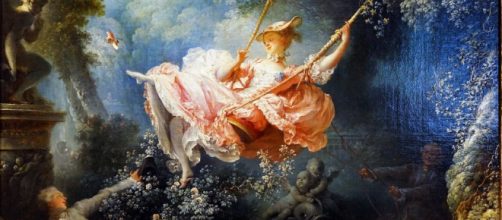Well, this is one for the history books. French teenagers, “shocked” by nudity in a 17th-century painting at the Louvre, complained to their parents. Teenagers? About nudity? In France?
The painting that upset the students, “Diana and Actaeon” by Giuseppe Cesari, describes a mythical scene from Ovid’s “Metamorphoses.” What you see is the hunter Actaeon stumbling upon the goddess in her bath with nymphs rushing to shield her.
Though these women have nothing on, they don’t flaunt themselves. They crouch, as if to conceal their bodies. Despite their exposed flesh, this painting is a vision of modesty.
Yet, highschoolers at the Jacques Cartier School near Paris objected to their teacher showing the work so much that their parents got involved, sparking a teacher walkout.
Sophie Venetitay, representing the teachers’ union, told the BBC that the “shocked” students blamed their teacher. The faculty, in solidarity, went on strike. Later, bad feelings on all sides quieted land classes were back in session.
More of the same
But I’m not quieted. This incident in France conjures up a similar one this year that The Guardian headlined “Florida principal resigns after parents decry Michelangelo’s David as pornography.”
So, it looks like calling nudity in museum art porn is a thing now. After centuries of art appreciation, paintings and sculptures that bare bodies are now viewed as X-rated and deemed obscene.
All of which makes the rules of the road for art writing tricky.
For one thing, I can’t show you Cesari’s painting on Facebook. Posting museum art with disrobed figures is forbidden. What’s more, the international news group that I write for – Blasting News – frowns on (but doesn’t forbid) my using the “n” word (the word that rhymes with rude).
As for those French highschoolers, they’re dogmatizing the wrong painting. As I see it, the dirties picture in all of art history is Jean-Honore Fragonard’s “The Swing” and it doesn’t have a speck of “n” in it.
“The Swing” pictures a young female suspended in mid-air as a young man, concealed in bushes below, looks up her rising skirt. And a leering old man, behind her, keeps the swing moving up and down with ropes.
Hiding in plain sight
Why, you may wonder, did Fragonard paint such a smutty picture? To hear art dealer P. J. Mariette tell it in his 1851 book “Abecedario” (Alphabet), Fragonard was a timid soul. Is that why the men in this picture try to stay out of sight?
When the Wallace Collection, a museum in London that owns “The Swing,” was restored in 2020, the Art Newspaper said it became “saucier” because “some mischievous details” were revealed.
Apparently, now you can see that the young woman is not as innocent as she seemed before the cleaning, that she's in on the dirty joke. The Art Newspaper said that Fragonard portrayed her as “more sensual.”
Wallace Collection curator, Yuriko Jackall, explained that darkened varnish had masked the young woman’s “mischievous” side.
So, you might say the cleaning made the painting dirtier. And popular, too.
According to Xavier Bray, who directs the Wallace Collection, this painting is the “most well-love picture” in the holding. Facebook will love it, too, because all the figures have their clothes on.
Odd, isn’t it? The painting that Facebook would reject is a picture of innocence despite the nudity, but an obscene painting like Fragonard’s gets through.


